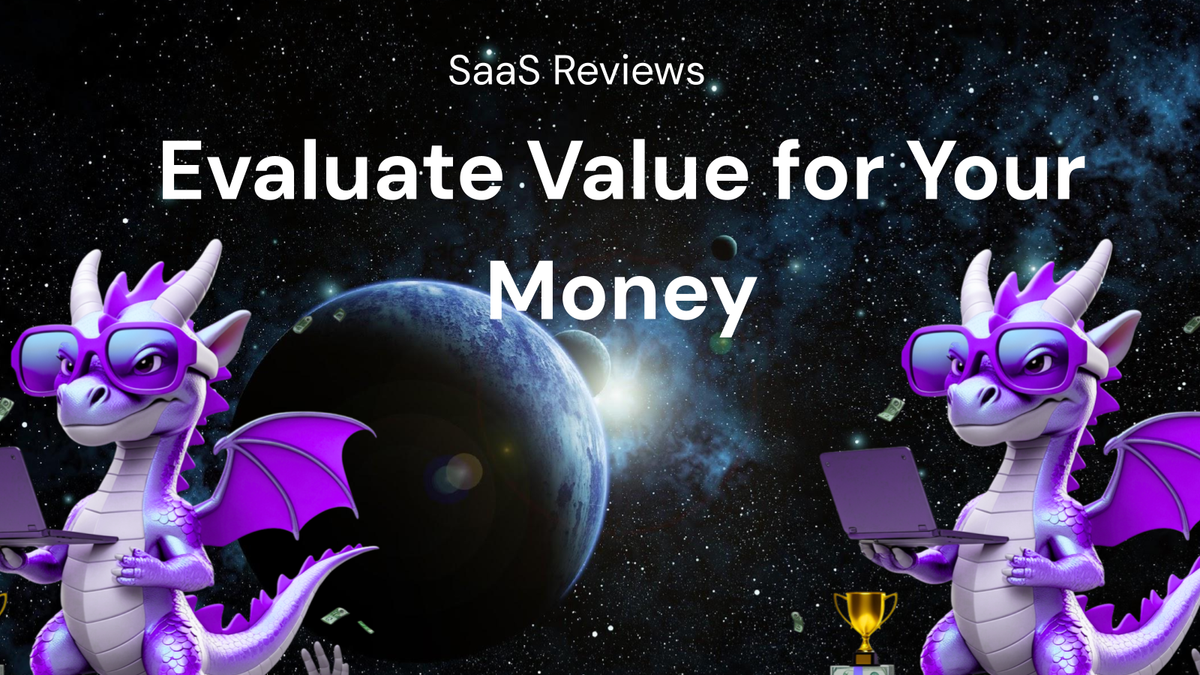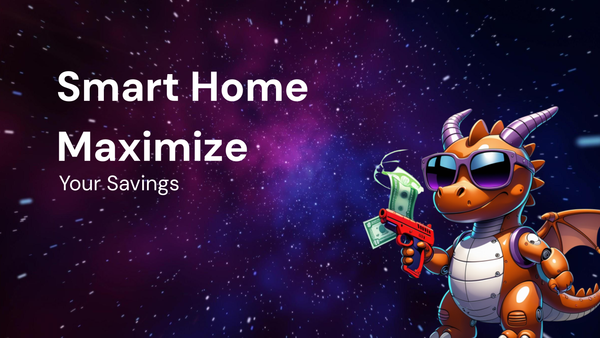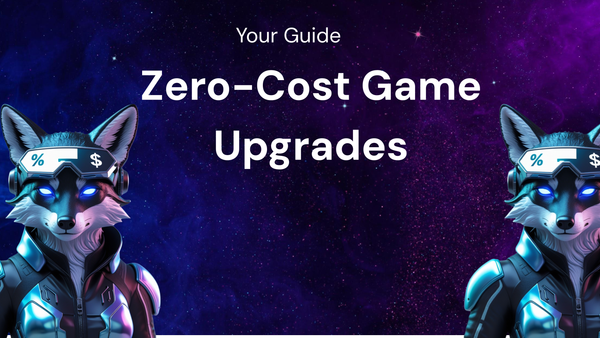SaaS Reviews: How to Evaluate Value for Your Money

SaaS Reviews: How to Evaluate Value for Your Money
In today's digital landscape, Software as a Service (SaaS) has become the backbone of countless businesses, from startups to established enterprises. From CRM and marketing automation to project management and accounting, SaaS solutions offer a flexible, scalable, and often cost-effective way to address critical business needs. However, with a seemingly endless array of SaaS options available, choosing the right one for your organization can feel like navigating a minefield.
Before committing your budget and integrating a new tool into your workflow, it's crucial to evaluate its value proposition thoroughly. This means going beyond the flashy marketing materials and digging deep to understand if the SaaS solution truly delivers the functionality, features, and support you need at a price that makes sense for your business.
This comprehensive guide will equip you with the knowledge and tools to effectively evaluate SaaS reviews, ensuring you make informed decisions that maximize your return on investment and propel your business forward.
I. Understanding the SaaS Landscape and the Importance of Reviews
A. The Rise of SaaS and its Impact on Businesses:
The SaaS model has revolutionized how businesses access and utilize software. Instead of purchasing and installing software on individual computers, users subscribe to a service hosted by a provider. This offers several advantages:
- Cost-Effectiveness: SaaS solutions often eliminate the need for large upfront investments in hardware and software licenses. Subscription-based pricing allows for predictable monthly or annual expenses.
- Scalability: SaaS solutions are easily scalable, allowing businesses to adjust their usage and subscription level as their needs evolve. This flexibility is particularly valuable for growing companies.
- Accessibility: Users can access SaaS applications from anywhere with an internet connection, promoting collaboration and remote work.
- Automatic Updates: SaaS providers handle all software updates and maintenance, freeing up IT staff to focus on other strategic initiatives.
- Integration: Many SaaS solutions offer integrations with other popular business tools, streamlining workflows and improving data sharing.
B. Why SaaS Reviews Matter More Than Ever:
With so many SaaS options available, it's essential to rely on more than just vendor-provided information. SaaS reviews play a critical role in helping businesses make informed decisions by providing:
- Unbiased Perspectives: Reviews from real users offer authentic insights into the strengths and weaknesses of a particular SaaS solution.
- Practical Use Cases: Reviews often describe how users are leveraging the software to solve specific business problems, providing valuable ideas and inspiration.
- Feature Validation: Reviews can help you verify if a SaaS solution actually delivers on its promised features and functionality.
- Support Quality Insights: Reviews can shed light on the quality of customer support offered by the SaaS provider, which is crucial for resolving technical issues and maximizing the value of the software.
- Early Warning Signs: Reviews can highlight potential issues or limitations that may not be immediately apparent during a free trial or demo.
II. Identifying Your Business Needs and Defining Success Criteria
Before diving into SaaS reviews, it's crucial to clearly define your business needs and establish success criteria for the SaaS solution you're seeking. This will serve as a framework for evaluating reviews and ensuring that you choose a solution that aligns with your specific requirements.
A. Conducting a Needs Assessment:
- Identify Pain Points: What are the key challenges or inefficiencies you're trying to address with a SaaS solution?
- Define Objectives: What specific goals do you hope to achieve by implementing a new SaaS tool? (e.g., increase sales, improve customer satisfaction, streamline project management)
- Map Existing Processes: How will the new SaaS solution integrate with your current workflows and systems?
- Consider User Requirements: What features and functionalities are essential for your team members to effectively use the software?
- Determine Budget Constraints: What is your budget for a SaaS solution, including subscription fees, implementation costs, and ongoing training?
B. Establishing Success Criteria:
Once you've identified your needs, you can establish specific, measurable, achievable, relevant, and time-bound (SMART) criteria for evaluating the success of a SaaS solution. Examples include:
- Increase sales conversion rate by 15% within six months.
- Reduce customer support ticket resolution time by 20% within three months.
- Improve project completion rate by 10% within one year.
- Reduce time spent on manual data entry by 5 hours per week per employee.
- Achieve a customer satisfaction score of 4.5 out of 5 within six months.
C. Prioritizing Features and Functionalities:
Based on your needs assessment and success criteria, create a prioritized list of must-have, nice-to-have, and unnecessary features. This will help you focus your evaluation efforts and avoid being swayed by flashy features that don't align with your core requirements.
III. Navigating and Analyzing SaaS Review Platforms
With a clear understanding of your business needs and success criteria, you can now begin exploring SaaS review platforms to gather valuable insights from real users.
A. Popular SaaS Review Platforms:
- G2: A leading platform featuring in-depth reviews, ratings, and comparisons of various SaaS solutions.
- Capterra: Offers a comprehensive directory of SaaS software with user reviews, pricing information, and feature comparisons.
- TrustRadius: Focuses on verified reviews and provides detailed product comparisons to help users make informed decisions.
- Software Advice: Provides expert advice and connects businesses with the right software solutions based on their specific needs.
- GetApp: Features user reviews, ratings, and comparisons of business software, along with helpful articles and resources.
B. Critical Evaluation Techniques for SaaS Reviews:
Not all SaaS reviews are created equal. It's essential to approach reviews with a critical eye and consider the following factors:
- Reviewer Authenticity: Look for verified reviews from real users. Platforms like G2 and TrustRadius often verify reviewer identities to ensure authenticity.
- Review Date: Pay attention to the date of the review. Older reviews may not reflect the current state of the software or the provider's service.
- Specificity: Look for reviews that provide specific details about the user's experience with the software. Vague or generic reviews are less helpful.
- Use Case Relevance: Focus on reviews from users in similar industries or with similar business needs to yours.
- Sentiment Analysis: Pay attention to the overall sentiment of the reviews. Are users generally positive, negative, or mixed about the software?
- Feature-Specific Feedback: Look for reviews that specifically address the features and functionalities that are most important to you.
- Support Quality Comments: Pay close attention to reviews that mention the quality of customer support provided by the SaaS vendor.
- Comparison to Competitors: Some reviews may compare the software to its competitors, providing valuable insights into its strengths and weaknesses relative to other options.
- Consider the Source: Be mindful of potential bias. Some reviews may be incentivized or influenced by the SaaS vendor.
- Look for Patterns: Identify recurring themes or issues mentioned in multiple reviews. This can indicate potential problems or areas for improvement.
C. Leveraging Review Filters and Search Functionality:
Most SaaS review platforms offer filters and search functionality to help you narrow down your search and find the most relevant reviews. Utilize these tools to:
- Filter by Industry: Focus on reviews from users in your specific industry.
- Filter by Company Size: Find reviews from companies of a similar size to yours.
- Filter by Feature: Search for reviews that specifically mention the features you're interested in.
- Sort by Rating: Sort reviews by rating to quickly identify the highest-rated and lowest-rated options.
- Search for Keywords: Use keywords to search for reviews that address specific concerns or questions you have.
IV. Beyond Reviews: Conducting Your Own Due Diligence
While SaaS reviews provide valuable insights, it's crucial to supplement them with your own due diligence.
A. Requesting a Demo or Free Trial:
Most SaaS providers offer a demo or free trial period, allowing you to experience the software firsthand. This is an essential step in the evaluation process.
- Prepare for the Demo: Before the demo, outline your key questions and objectives.
- Test Key Features: Focus on testing the features that are most important to your business needs.
- Evaluate User Interface: Assess the ease of use and intuitiveness of the software's user interface.
- Assess Integration Capabilities: Verify that the software integrates seamlessly with your existing systems.
- Test Customer Support: Contact customer support to assess their responsiveness and helpfulness.
- Gather User Feedback: Involve team members in the demo or free trial process and gather their feedback.
B. Contacting References:
Ask the SaaS provider for a list of references – current customers who are willing to share their experiences with the software.
- Prepare a List of Questions: Before contacting references, prepare a list of specific questions about their experience with the software.
- Focus on Key Areas: Ask about the software's performance, reliability, ease of use, and the quality of customer support.
- Inquire About Challenges: Ask about any challenges they've encountered with the software and how the provider resolved them.
- Understand the Implementation Process: Ask about the implementation process and any tips they have for a smooth rollout.
C. Evaluating Pricing and Contract Terms:
Carefully evaluate the pricing structure and contract terms offered by the SaaS provider.
- Understand the Pricing Model: Determine if the pricing model is based on usage, users, or features.
- Compare Pricing to Competitors: Compare the pricing to that of other similar SaaS solutions.
- Consider Hidden Costs: Be aware of potential hidden costs, such as implementation fees, training costs, or data migration fees.
- Review the Service Level Agreement (SLA): Carefully review the SLA to understand the provider's uptime guarantee, support response times, and data security measures.
- Understand the Contract Terms: Pay attention to the contract length, renewal terms, and cancellation policies.
D. Assessing Security and Compliance:
Ensure that the SaaS provider has robust security measures in place to protect your data.
- Inquire About Security Certifications: Ask about industry-standard security certifications, such as ISO 27001 or SOC 2.
- Assess Data Encryption Practices: Verify that the provider uses strong encryption methods to protect data in transit and at rest.
- Understand Data Backup and Recovery Procedures: Inquire about the provider's data backup and recovery procedures in case of a disaster.
- Ensure Compliance with Regulations: Verify that the provider complies with relevant data privacy regulations, such as GDPR or CCPA.
V. Making the Right Decision and Maximizing Value
After carefully evaluating SaaS reviews and conducting your own due diligence, you're now ready to make an informed decision and maximize the value of your chosen solution.
A. Aligning Your Choice with Your Business Needs:
Ensure that the SaaS solution you choose directly addresses your identified business needs and helps you achieve your established success criteria.
B. Negotiating Contract Terms:
Don't be afraid to negotiate contract terms with the SaaS provider. You may be able to negotiate a lower price, more flexible payment terms, or additional features.
C. Implementing the Solution Effectively:
A successful implementation is crucial for maximizing the value of your SaaS solution.
- Develop an Implementation Plan: Create a detailed implementation plan that outlines the steps involved, timelines, and responsibilities.
- Provide Training to Users: Provide comprehensive training to users on how to effectively use the software.
- Monitor Usage and Performance: Track usage and performance metrics to ensure that the software is delivering the expected results.
- Gather User Feedback: Regularly gather feedback from users to identify areas for improvement and optimize the software's usage.
D. Continuously Evaluating and Optimizing:
The evaluation process doesn't end after you've implemented the SaaS solution. Continuously evaluate its performance and optimize its usage to ensure that you're maximizing its value.
- Track Key Metrics: Monitor key metrics to assess the software's impact on your business.
- Gather User Feedback: Regularly gather feedback from users to identify areas for improvement.
- Stay Up-to-Date on New Features: Keep abreast of new features and functionalities offered by the SaaS provider.
- Re-evaluate Your Needs: Periodically re-evaluate your business needs and ensure that the SaaS solution continues to align with your evolving requirements.
Conclusion:
Choosing the right SaaS solution can be a complex and time-consuming process, but by carefully evaluating SaaS reviews and conducting your own due diligence, you can make informed decisions that maximize your return on investment and propel your business forward. Remember to start by defining your business needs and establishing success criteria. Then, navigate SaaS review platforms with a critical eye, leveraging filters and search functionality to find the most relevant reviews. Supplement your review findings with demos, reference checks, and a thorough evaluation of pricing, contract terms, security, and compliance. Finally, implement the solution effectively, continuously monitor its performance, and optimize its usage to ensure that you're maximizing its value for years to come. By following these steps, you can confidently navigate the SaaS landscape and select solutions that empower your business to thrive.




